Alfa Romeo Tonale vs Renault Trafic Bus – Differences & prices compared
Everyday use, family trips or long-distance drives – here’s where the differences show.
Discover whether Alfa Romeo Tonale or Renault Trafic Bus fits your lifestyle better.
Costs and Efficiency:
Price and efficiency are often the first things buyers look at. Here it becomes clear which model has the long-term edge – whether at the pump, the plug, or in purchase price.
Alfa Romeo Tonale has a minimal advantage in terms of price – it starts at 35000 £, while the Renault Trafic Bus costs 38200 £. That’s a price difference of around 3268 £.
Fuel consumption also shows a difference: Alfa Romeo Tonale manages with 1.30 L and is therefore significantly more efficient than the Renault Trafic Bus with 6.70 L. The difference is about 5.40 L per 100 km.
Engine and Performance:
Power, torque and acceleration say a lot about how a car feels on the road. This is where you see which model delivers more driving dynamics.
When it comes to engine power, the Alfa Romeo Tonale has a clearly perceptible edge – offering 280 HP compared to 170 HP. That’s roughly 110 HP more horsepower.
In acceleration from 0 to 100 km/h, the Alfa Romeo Tonale is decisively quicker – completing the sprint in 6.20 s, while the Renault Trafic Bus takes 10.60 s. That’s about 4.40 s faster.
In terms of top speed, the Alfa Romeo Tonale performs slightly better – reaching 212 km/h, while the Renault Trafic Bus tops out at 180 km/h. The difference is around 32 km/h.
There’s also a difference in torque: Renault Trafic Bus pulls somewhat stronger with 380 Nm compared to 320 Nm. That’s about 60 Nm difference.
Space and Everyday Use:
Cabin size, boot volume and payload all play a role in everyday practicality. Here, comfort and flexibility make the difference.
Seats: Renault Trafic Bus offers clearly more seating capacity – 9 vs 5.
In curb weight, Alfa Romeo Tonale is evident lighter – 1600 kg compared to 2031 kg. The difference is around 431 kg.
In maximum load capacity, the Renault Trafic Bus performs decisively better – up to 4000 L, which is about 2450 L more than the Alfa Romeo Tonale.
When it comes to payload, Renault Trafic Bus clearly takes the win – 982 kg compared to 535 kg. That’s a difference of about 447 kg.
Who comes out on top?
Overall, the Alfa Romeo Tonale shows itself to be leaves the rival little chance and secures the title of DriveDuel Champion.
It convinces with the more balanced overall package and proves to be the more versatile choice for everyday use.
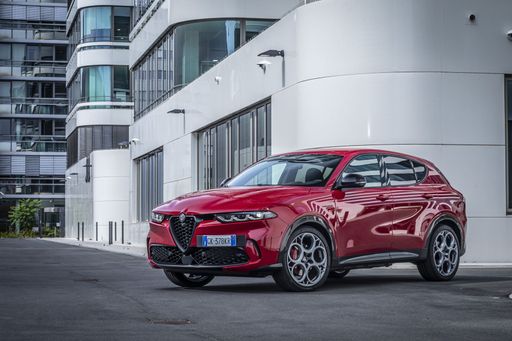 @ Alfa Romeo / Stellantis Media
@ Alfa Romeo / Stellantis Media
Alfa Romeo Tonale
Alfa Romeo Tonale
The Alfa Romeo Tonale embodies the brand's timeless elegance and sporty DNA, captivating drivers with its bold design and dynamic presence on the road. Inside, the Tonale impresses with a perfect blend of luxury and cutting-edge technology, offering a sophisticated driving experience that remains true to the Alfa Romeo spirit. With its agile performance and distinctive character, the Tonale stands out in the competitive SUV market, appealing to those who seek both style and substance.
details @ Alfa Romeo / Stellantis Media
@ Alfa Romeo / Stellantis Media
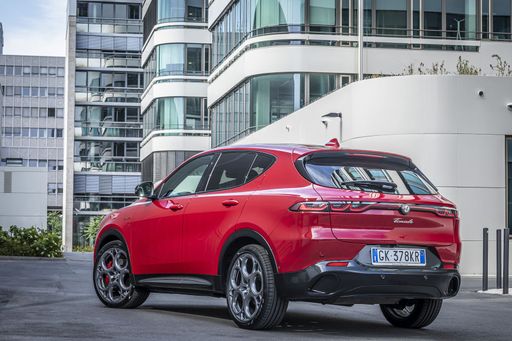 @ Alfa Romeo / Stellantis Media
@ Alfa Romeo / Stellantis Media
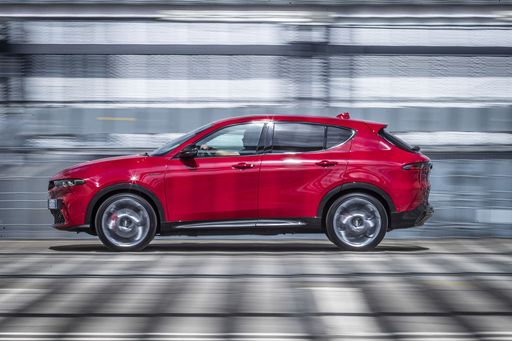 @ Alfa Romeo / Stellantis Media
@ Alfa Romeo / Stellantis Media
 @ Alfa Romeo / Stellantis Media
@ Alfa Romeo / Stellantis Media
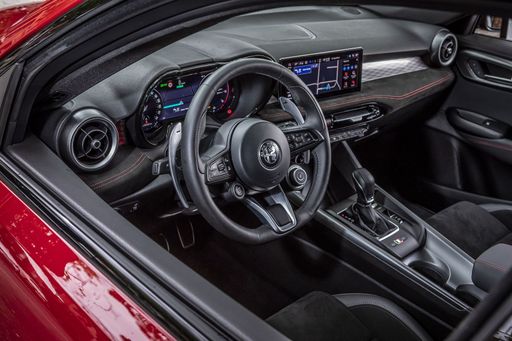 @ Alfa Romeo / Stellantis Media
@ Alfa Romeo / Stellantis Media
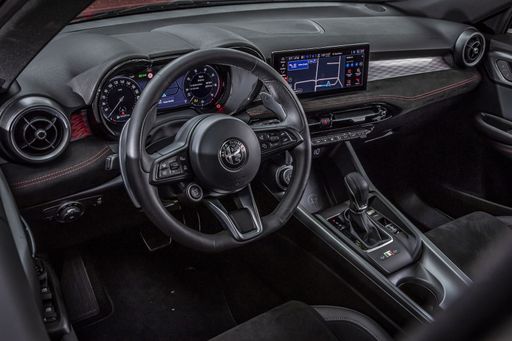 @ Alfa Romeo / Stellantis Media
@ Alfa Romeo / Stellantis Media
Renault Trafic Bus
The Renault Trafic Bus is a versatile and spacious option for those needing to transport multiple passengers comfortably. With its modern design and practical features, it is well-suited for both business and leisure purposes. Its efficient engine and smooth handling make it a reliable choice for long journeys.
details
 @ Alfa Romeo / Stellantis Media
@ Alfa Romeo / Stellantis Media
|
|
|
|
|
Costs and Consumption |
|
|---|---|
|
Price
35000 - 53200 £
|
Price
38200 - 54400 £
|
|
Consumption L/100km
1.3 - 5.6 L
|
Consumption L/100km
6.7 - 7.2 L
|
|
Consumption kWh/100km
-
|
Consumption kWh/100km
-
|
|
Electric Range
62 km
|
Electric Range
-
|
|
Battery Capacity
12 kWh
|
Battery Capacity
-
|
|
co2
30 - 140 g/km
|
co2
175 - 189 g/km
|
|
Fuel tank capacity
42 - 55 L
|
Fuel tank capacity
80 L
|
Dimensions and Body |
|
|---|---|
|
Body Type
SUV
|
Body Type
Bus
|
|
Seats
5
|
Seats
8 - 9
|
|
Doors
5
|
Doors
4
|
|
Curb weight
1600 - 1910 kg
|
Curb weight
2031 - 2352 kg
|
|
Trunk capacity
385 - 500 L
|
Trunk capacity
-
|
|
Length
4528 mm
|
Length
5080 - 5480 mm
|
|
Width
1835 mm
|
Width
1956 mm
|
|
Height
1614 mm
|
Height
1973 - 1974 mm
|
|
Max trunk capacity
1430 - 1550 L
|
Max trunk capacity
3200 - 4000 L
|
|
Payload
510 - 535 kg
|
Payload
718 - 982 kg
|
Engine and Performance |
|
|---|---|
|
Engine Type
Plugin Hybrid, Petrol MHEV, Diesel
|
Engine Type
Diesel
|
|
Transmission
Automatic
|
Transmission
Manuel, Automatic
|
|
Transmission Detail
Automatic Gearbox, Dual-Clutch Automatic
|
Transmission Detail
Manual Gearbox, Automatic Gearbox
|
|
Drive Type
All-Wheel Drive, Front-Wheel Drive
|
Drive Type
Front-Wheel Drive
|
|
Power HP
130 - 280 HP
|
Power HP
110 - 170 HP
|
|
Acceleration 0-100km/h
6.2 - 10.9 s
|
Acceleration 0-100km/h
10.6 - 16.5 s
|
|
Max Speed
194 - 212 km/h
|
Max Speed
161 - 180 km/h
|
|
Torque
240 - 320 Nm
|
Torque
300 - 380 Nm
|
|
Number of Cylinders
4
|
Number of Cylinders
4
|
|
Power kW
96 - 206 kW
|
Power kW
81 - 125 kW
|
|
Engine capacity
1332 - 1598 cm3
|
Engine capacity
1997 cm3
|
General |
|
|---|---|
|
Model Year
2024 - 2025
|
Model Year
2023 - 2025
|
|
CO2 Efficiency Class
B, D, E
|
CO2 Efficiency Class
G, F
|
|
Brand
Alfa Romeo
|
Brand
Renault
|
What drivetrain options does the Alfa Romeo Tonale have?
The Alfa Romeo Tonale is offered with All-Wheel Drive or Front-Wheel Drive.
The prices and data displayed are estimates based on German list prices and may vary by country. This information is not legally binding.
